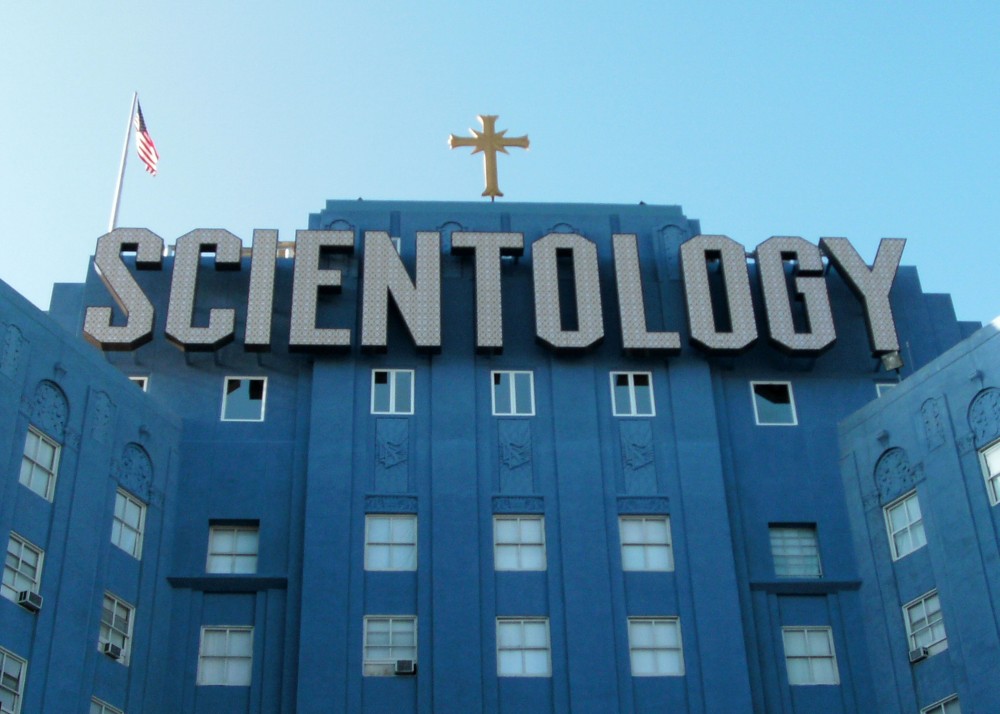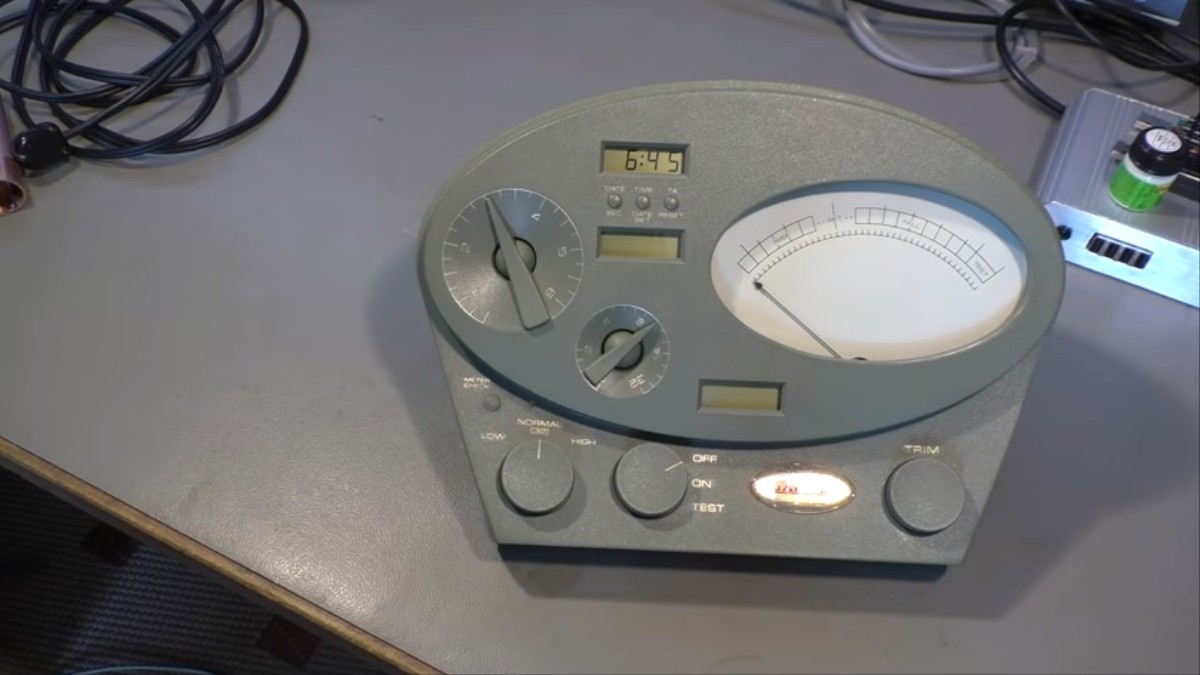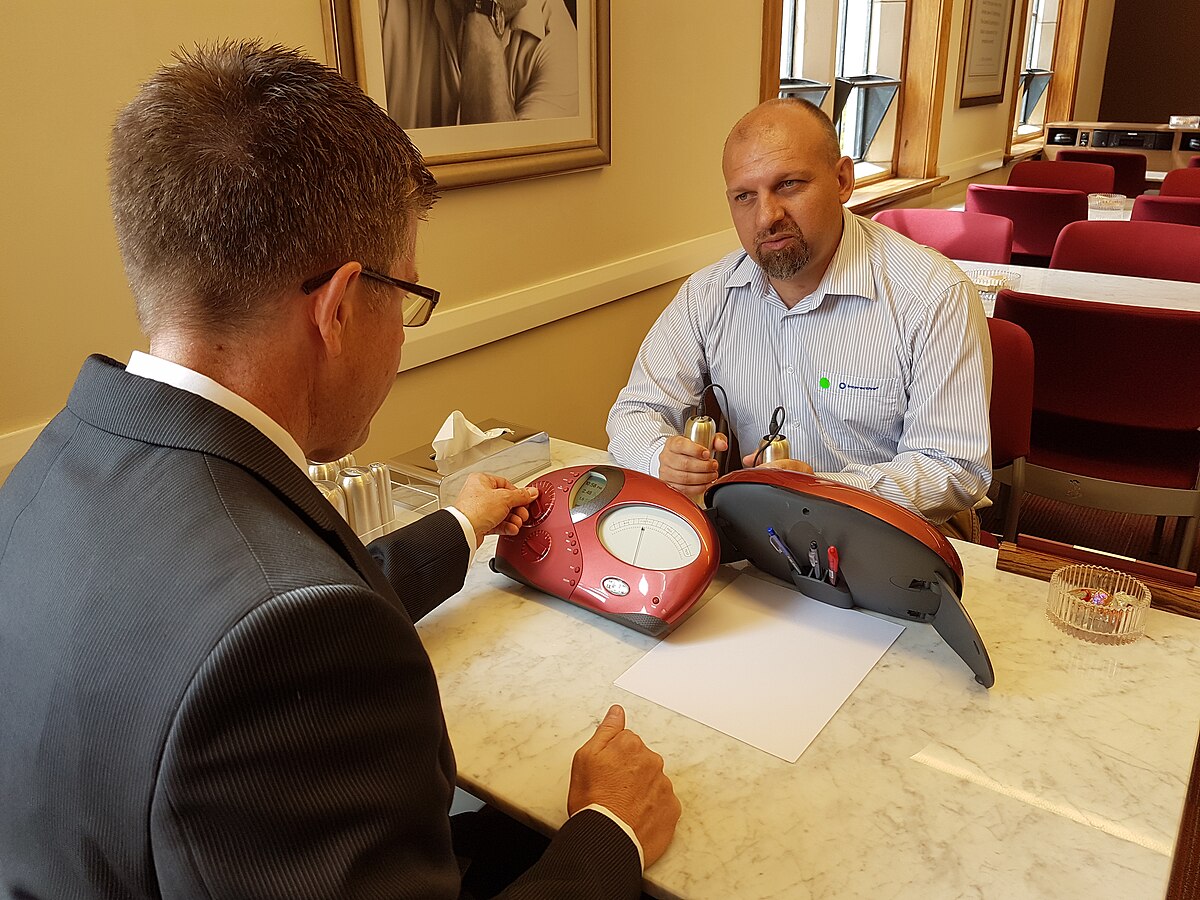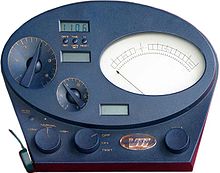steve_bank
Diabetic retinopathy and poor eyesight. Typos ...

L. Ron Hubbard - Wikipedia
Before Scientology he creted Dianetics.
There is a mythology to Scientology. Thetan another version of god or vosmic spirit.

Thetan - Wikipedia
In Scientology, the concept of the thetan (/ˈθeɪtən/) is similar to the concept of self, or the spirit or soul as found in several belief systems. This similarity is not total, though. The term is derived from the Greek letter Θ, theta, which in Scientology beliefs represents "the source of life, or life itself."[1] In Scientology it is believed that it is the thetan, not the central nervous system, which commands the body through communication points[clarify].[2]
Thetans have been described in the Applied Religious Philosophy of Scientology in a number of ways.
- A "thetan is an immortal spiritual being; the human soul."[3]
- "The being who is the individual and who handles and lives in the body."[1]
- "A thetan is not a thing, a thetan is the creator of things."[1]
- A thetan is "the person himself—not his body or his name, the physical universe, his mind, or anything else; that which is aware of being aware; the identity which is the individual."[1]
According to Scientology, the concept for the thetan was first discovered in the early 1950s by the science fiction author L. Ron Hubbard, drawing on reports by Dianetics practitioners, who in session, found clients came up with descriptions of past-life experiences. Although the term is comparable to a soul, a thetan can be incarnated many times over lifetimes. An important goal in Scientology is to develop a greater awareness and higher levels of ability to operate in the physical universe as an Operating Thetan.[4]
Hubbard was a 3rd rate scifi writer. There is a weak alleged link to Alister Crowley.
The E-Meter, galvanic skin response meter, is part of the getting clear process. Hubbard adaped it from lie detectors. In todays prices you can build one for about $100.
Clear (Scientology) - Wikipedia
n Dianetics and Scientology, Clear is one of the major ostensible "states" practitioners strive to reach on their way up the Bridge to Total Freedom. The state of Clear is reached when a person supposedly becomes free of the influence of engrams, unwanted emotions or painful traumas not readily available to the conscious mind. Scientologists believe that human beings accumulate anxieties, psychosomatic illnesses, and aberration due to receiving engrams throughout their current or past lives, and that by applying Dianetics, every single person can reach the state of Clear.[1]
A Clear is defined by the Church of Scientology as a person who no longer has a "reactive mind", and is therefore free from the reactive mind's negative effects. A Clear is said to be "at cause over" (that is, in control of) their "mental energy" (their thoughts), and able to think clearly even when faced with the very situations that in earlier times caused them difficulty. The next level of spiritual development is that of an Operating Thetan. A person who has not reached a state of Clear is called a "pre-clear."[2]
Dianetics claims that a person's awareness is influenced by the stimulus-response nature of the reactive mind. Achieving the state of Clear means a person has overcome the reactive mind and is in complete control of their analytical mind. According to Hubbard: "A Clear is a being who no longer has his own reactive mind, and therefore suffers none of the ill effects the reactive mind can cause. The Clear has no engrams which, when restimulated, throw out the correctness of his computations by entering hidden and false data."[3] Sociologist Roy Wallis noted, “Being Clear meant being able to do all those things which one could currently not do, and to which one aspired so desperately.”[4] It is estimated that the cost of reaching the Clear state in Scientology is $128,000.[5]




